Shade on solar panels - Updated January 2024
Do you think this might be a problem?
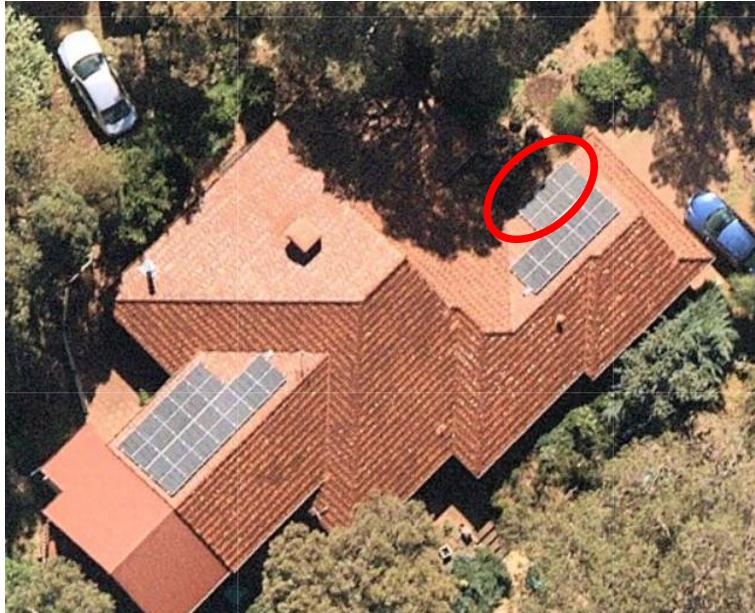
What about now?
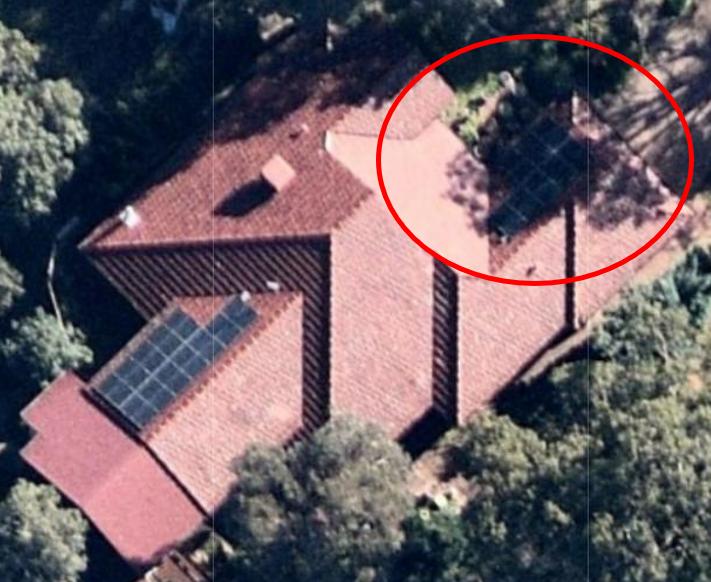
In the upper image the shade is minimal touching the bottom of two panels.
I'll discuss partial shading in a moment.
In the lower image the shade covers all of the panels on the North East of the property.
There is no technology that can solve that.
The panel production for that 'string' will be terrible until the Earth rotates a bit more.
Partial shading
When panels are partially shaded the conventional wisdom is that the shaded panels will bring down the output of the rest.
However, conventional wisdom ignores technology.
Diodes
Every solar panel has multiple bypass diodes installed into the panel junction box(s).
Each diode controls a string of solar cells inside the panel.
Too much shade, the diode activates cutting off their string of cells completely, but leaving the rest of the panel to operate normally.
Global Maximum Power Point Tracking
SMA call this inverter algorithm 'ShadeFix', Goodwe call it 'Shadow Scan', Fronius 'Dynamic Peak Manager', Huawei 'Multi-Peak scanning'.
Most don't have a name for it as it has been a pretty standard feature for ten years or more.
All it means is that the inverter rescans the panels regularly, and over a wide range of voltages.
By doing this it can adjust the string voltage if panels gets shaded, to harvest more power.
It really works. Often better than optimisers and micros.
However, there is a downside to this feature and you definitely want it turned OFF if you don't have shade.
The downside is that each time the inverter does a new scan to find the best possible voltage for maximum power
it also reduces the output of the panels while it's doing the scan. The scan itself may take a few milliseconds but
it usually takes another 30-60 seconds afterwards for the inverter to hit its straps again.
I've been told that the cheapest inverters don't have this feature.
Maybe it is true, maybe not. Plenty of self-serving mis-information in the solar industry.
Seems to me though that if it's no more than an algorithm, no hardware, then why wouldn't everyone have it?
We usually leave it turned off unless there is significant shade, because of the power loss when scanning described above.
DC optimisers
These are $100 little black boxes that attach to some, or all, of the solar panels.
There are three brands in Australia that I know about.
Huawei that only work with Huawei inverters in 'buck only' mode.
SolarEdge that only work with SolarEdge inverters in 'buck and boost' mode
Tigo that work with any string inverter (except SolarEdge) in 'buck only' mode.
I'll explain 'buck and boost' a bit further down.
They work very well increasing output for situations like the top picture above (minimal shading).
They will do nothing at all to help with blanket shading in the lower image.
One of the advantages of optimisers is that you can usually see it's performance in the reporting app.
I have Huawei optimisers on a string of 9 x 370W panels at my home, and no optimisers on the other 9 panel string.
I did this because those 9 optimised panels get shading from my Aircon, from the upper storey, and some of them face South !
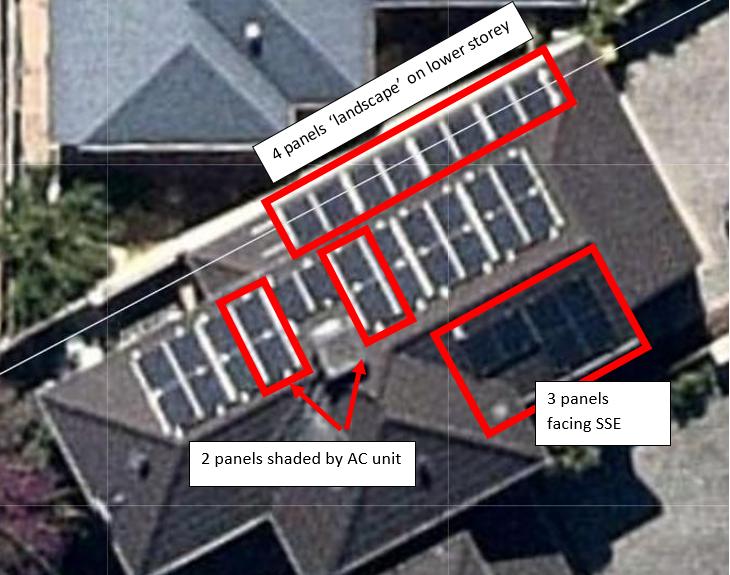
This image shows how an optimiser 'bucking' the voltage of a shaded panel works...

If you look at optimiser 2 it is producing current of 8.86A (green circle)
The panel voltage is 33.9V which is fractionally reduced by the optimiser to 33.7V
This slight voltage drop (buck) slightly increases the current to 8.88A
The resulting power from panel 2 is 299.4W (33.7V x 8.88A)
Panel 3 is shaded and is only producing 4.34A and a voltage of 34.6V
The optimiser bucks the voltage down to 16.2V which raises the current to 8.86A
The resulting power is 143.6W (16.2V x 8.86A)
All the panels are now producing the same current, but as you can see, not the same power (W).
The shaded panel 3 with it's optimiser is producing 143.6W.
Panel 2s power is more than double that.
If panel 3 didn't have an optimiser and somehow was able to operate on its own then it would have been
producing 34.6V x 4.34A = 150W, so the optimiser looks like it has consumed 7W.
The electronics inside have got to be powered by something !
The take-away from this is that the optimiser is 'saving the other panels on the string'
The optimiser drops its voltage which raises its current to match the best performing panel's current.
'Boosting' the voltage is not necessary with inverters that have MPPTs operating through a wide voltage range.
Now there's a mouthful.
Put another way, SolarEdge inverters require SolarEdge optimisers on every panel and the string operates at a fixed 380V.
Their system is bucking and boosting the voltage of the entire string of panels so it maintains a steady 380V.
Volts x Amps = Watts.
Buck - If you drop the voltage the current goes up but the Watts stay the same.
Boost - If you raise the voltage the current goes down but the Watts stay the same.
There's no benefit in boosting the voltage with an inverter like Huawei, or Tigos on a Fronius etc.
(A respectful nod to the engineers reading this who may dispute that and claim there can be a fractional efficiency gain)
This image shows the production of each panel/optimiser for October (up to 26th)
Each optimiser is identified by a number, 1.0.1, 1.0.2, 1.0.3 etc
The production in kWh for each one is shown, so 53.124kWh for 1.0.7 (Oct 1st to Oct 26th)
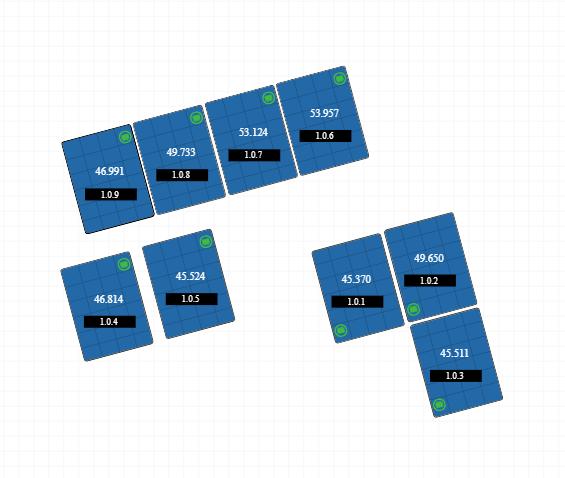
I am very happy with the result from the optimisers from what was a terrible roof for solar.
It works for me because my own panel shading on my 'horror string' is partial and temporary.
The Earth rotates and the shade on one panel passes to another.
For most of the year my 'bad' string with optimisers produces 2kWh per day less than the perfect unshaded string.
That's awesome. They work great.
But...(isn't there always a "but"), my roof is especially terrible from not just shade but different roof orientations.
If optimisers are deployed ONLY for shade then I'm less convinced they are worthwhile.
Some cases where we have had 'before and after' installations of optimisers in shade show little difference at all.
The built-in diodes and 6 strings of cells inside modern panels seem to do just as good a job as optimisers in shade.
Micro inverters
Micros, with dominant brand Enphase, handle shading much like optimisers.
Each micro is attached to a panel and converts DC panel power to AC power right there on the roof.
It's a neat system with no central inverter. Each panel is a law unto itself which makes for easier installs on difficult roofs.
Whether an optimised system, a micro inverter system, the inverters own algorithms or panel diodes produce the best result in shade depends on who you talk to.
From my own experience, it entirely depends on how and when the shade blocks the panels.
I'd also add that avoiding shade altogether by not putting panels where they will get shaded is probably the best idea, but not always possible.
No shade?
There's no such thing as 'no shade'.
Clouds, dust and leaves shade panels. It's not just TV antennas, AC, flues etc.
Any shade is going to reduce output, but the question is by how much?
If you washed your panels every month you might achieve 5% more power by year's end.
Your production might go from 30kWh per day to 31.5kWh per day.
Many huge solar farms have robots that roam the panels endlessly cleaning them.
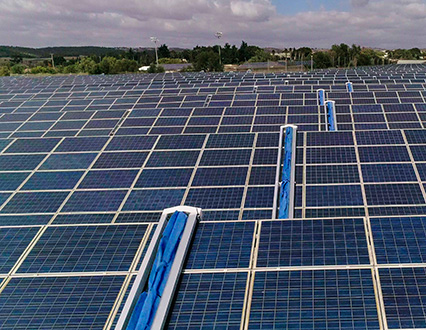
Most modern panels have a 'self-cleaning' coating on the glass that helps the rain wash the panels.
I don't see much point in fitting optimisers or micros where the house has no shading obstructions.
By that I mean, trees, TV antennas, other roofs be they your own or a neighbour's, flues etc.
Whilst they will help you to produce a bit more power by handling shading from clouds and 'soiling', they also consume power.
Micros/Optimisers are a box of electronics that need a small amount of power to operate.
Not much, but enough to partially counter-act some of the benefit they provide.
Who make micros and optimisers
Most optimisers cost about $100.
SolarEdge, Huawei and Tigo make optimisers and Enphase make Micro inverters.
SolarEdge optimisers only work with SolarEdge inverters (despite what you might read online)
Huawei optimisers only work with Huawei inverters.
Tigo optimisers work with ANY inverter except SolarEdge or a micro inverter system like Enphase.
The most reliable optimisers have been, in our own experience, Huawei.
Huawei also give you the 'panel level reporting' for free.
SolarEdge give panel level reporting with some of their inverters, and charge extra for others.
Tigo give panel level reporting if you buy their 'Cloud Connect' unit (about $500 + install and config).
Huawei and Tigo optimisers can be 'selectively deployed' which means, 'put them only where you need them'
I recommend you purchase Tigo Cloud Connect if buying Tigo optimisers from anyone other than us.
They have been known not to work correctly unless their factory firmware is upgraded and the only way to do that
is with the Tigo Cloud Connect.
We keep one on the workbench and update any new Tigo optimisers before going out to install them.
Actually, strike that, I recommend you buy Cloud Connect anyway because half the fun is seeing them at work.
SolarEdge require an optimiser, whether you 'need it or not', on every panel.
Enphase micro inverters aren't the only micros in the World, but in Australia they might as well be.
Panel level reporting is available but usually has to be 'unlocked' by the installer.
Enphase micros cost about $200 each.
Solar4Ever have been selling and installing solar in Perth, WA since 2011.
or email
This review was written by Andrew MacKeith, Solar4Ever service manager since 2011.


What about now?

In the upper image the shade is minimal touching the bottom of two panels.
I'll discuss partial shading in a moment.
In the lower image the shade covers all of the panels on the North East of the property.
There is no technology that can solve that.
The panel production for that 'string' will be terrible until the Earth rotates a bit more.
Partial shading
When panels are partially shaded the conventional wisdom is that the shaded panels will bring down the output of the rest.
However, conventional wisdom ignores technology.
Diodes
Every solar panel has multiple bypass diodes installed into the panel junction box(s).
Each diode controls a string of solar cells inside the panel.
Too much shade, the diode activates cutting off their string of cells completely, but leaving the rest of the panel to operate normally.
Global Maximum Power Point Tracking
SMA call this inverter algorithm 'ShadeFix', Goodwe call it 'Shadow Scan', Fronius 'Dynamic Peak Manager', Huawei 'Multi-Peak scanning'.
Most don't have a name for it as it has been a pretty standard feature for ten years or more.
All it means is that the inverter rescans the panels regularly, and over a wide range of voltages.
By doing this it can adjust the string voltage if panels gets shaded, to harvest more power.
It really works. Often better than optimisers and micros.
However, there is a downside to this feature and you definitely want it turned OFF if you don't have shade.
The downside is that each time the inverter does a new scan to find the best possible voltage for maximum power
it also reduces the output of the panels while it's doing the scan. The scan itself may take a few milliseconds but
it usually takes another 30-60 seconds afterwards for the inverter to hit its straps again.
I've been told that the cheapest inverters don't have this feature.
Maybe it is true, maybe not. Plenty of self-serving mis-information in the solar industry.
Seems to me though that if it's no more than an algorithm, no hardware, then why wouldn't everyone have it?
We usually leave it turned off unless there is significant shade, because of the power loss when scanning described above.
DC optimisers
These are $100 little black boxes that attach to some, or all, of the solar panels.
There are three brands in Australia that I know about.
Huawei that only work with Huawei inverters in 'buck only' mode.
SolarEdge that only work with SolarEdge inverters in 'buck and boost' mode
Tigo that work with any string inverter (except SolarEdge) in 'buck only' mode.
I'll explain 'buck and boost' a bit further down.
They work very well increasing output for situations like the top picture above (minimal shading).
They will do nothing at all to help with blanket shading in the lower image.
One of the advantages of optimisers is that you can usually see it's performance in the reporting app.
I have Huawei optimisers on a string of 9 x 370W panels at my home, and no optimisers on the other 9 panel string.
I did this because those 9 optimised panels get shading from my Aircon, from the upper storey, and some of them face South !

This image shows how an optimiser 'bucking' the voltage of a shaded panel works...

If you look at optimiser 2 it is producing current of 8.86A (green circle)
The panel voltage is 33.9V which is fractionally reduced by the optimiser to 33.7V
This slight voltage drop (buck) slightly increases the current to 8.88A
The resulting power from panel 2 is 299.4W (33.7V x 8.88A)
Panel 3 is shaded and is only producing 4.34A and a voltage of 34.6V
The optimiser bucks the voltage down to 16.2V which raises the current to 8.86A
The resulting power is 143.6W (16.2V x 8.86A)
All the panels are now producing the same current, but as you can see, not the same power (W).
The shaded panel 3 with it's optimiser is producing 143.6W.
Panel 2s power is more than double that.
If panel 3 didn't have an optimiser and somehow was able to operate on its own then it would have been
producing 34.6V x 4.34A = 150W, so the optimiser looks like it has consumed 7W.
The electronics inside have got to be powered by something !
The take-away from this is that the optimiser is 'saving the other panels on the string'
The optimiser drops its voltage which raises its current to match the best performing panel's current.
'Boosting' the voltage is not necessary with inverters that have MPPTs operating through a wide voltage range.
Now there's a mouthful.
Put another way, SolarEdge inverters require SolarEdge optimisers on every panel and the string operates at a fixed 380V.
Their system is bucking and boosting the voltage of the entire string of panels so it maintains a steady 380V.
Volts x Amps = Watts.
Buck - If you drop the voltage the current goes up but the Watts stay the same.
Boost - If you raise the voltage the current goes down but the Watts stay the same.
There's no benefit in boosting the voltage with an inverter like Huawei, or Tigos on a Fronius etc.
(A respectful nod to the engineers reading this who may dispute that and claim there can be a fractional efficiency gain)
This image shows the production of each panel/optimiser for October (up to 26th)
Each optimiser is identified by a number, 1.0.1, 1.0.2, 1.0.3 etc
The production in kWh for each one is shown, so 53.124kWh for 1.0.7 (Oct 1st to Oct 26th)

I am very happy with the result from the optimisers from what was a terrible roof for solar.
It works for me because my own panel shading on my 'horror string' is partial and temporary.
The Earth rotates and the shade on one panel passes to another.
For most of the year my 'bad' string with optimisers produces 2kWh per day less than the perfect unshaded string.
That's awesome. They work great.
But...(isn't there always a "but"), my roof is especially terrible from not just shade but different roof orientations.
If optimisers are deployed ONLY for shade then I'm less convinced they are worthwhile.
Some cases where we have had 'before and after' installations of optimisers in shade show little difference at all.
The built-in diodes and 6 strings of cells inside modern panels seem to do just as good a job as optimisers in shade.
Micro inverters
Micros, with dominant brand Enphase, handle shading much like optimisers.
Each micro is attached to a panel and converts DC panel power to AC power right there on the roof.
It's a neat system with no central inverter. Each panel is a law unto itself which makes for easier installs on difficult roofs.
Whether an optimised system, a micro inverter system, the inverters own algorithms or panel diodes produce the best result in shade depends on who you talk to.
From my own experience, it entirely depends on how and when the shade blocks the panels.
I'd also add that avoiding shade altogether by not putting panels where they will get shaded is probably the best idea, but not always possible.
No shade?
There's no such thing as 'no shade'.
Clouds, dust and leaves shade panels. It's not just TV antennas, AC, flues etc.
Any shade is going to reduce output, but the question is by how much?
If you washed your panels every month you might achieve 5% more power by year's end.
Your production might go from 30kWh per day to 31.5kWh per day.
Many huge solar farms have robots that roam the panels endlessly cleaning them.

Most modern panels have a 'self-cleaning' coating on the glass that helps the rain wash the panels.
I don't see much point in fitting optimisers or micros where the house has no shading obstructions.
By that I mean, trees, TV antennas, other roofs be they your own or a neighbour's, flues etc.
Whilst they will help you to produce a bit more power by handling shading from clouds and 'soiling', they also consume power.
Micros/Optimisers are a box of electronics that need a small amount of power to operate.
Not much, but enough to partially counter-act some of the benefit they provide.
Who make micros and optimisers
Most optimisers cost about $100.
SolarEdge, Huawei and Tigo make optimisers and Enphase make Micro inverters.
SolarEdge optimisers only work with SolarEdge inverters (despite what you might read online)
Huawei optimisers only work with Huawei inverters.
Tigo optimisers work with ANY inverter except SolarEdge or a micro inverter system like Enphase.
The most reliable optimisers have been, in our own experience, Huawei.
Huawei also give you the 'panel level reporting' for free.
SolarEdge give panel level reporting with some of their inverters, and charge extra for others.
Tigo give panel level reporting if you buy their 'Cloud Connect' unit (about $500 + install and config).
Huawei and Tigo optimisers can be 'selectively deployed' which means, 'put them only where you need them'
I recommend you purchase Tigo Cloud Connect if buying Tigo optimisers from anyone other than us.
They have been known not to work correctly unless their factory firmware is upgraded and the only way to do that
is with the Tigo Cloud Connect.
We keep one on the workbench and update any new Tigo optimisers before going out to install them.
Actually, strike that, I recommend you buy Cloud Connect anyway because half the fun is seeing them at work.
SolarEdge require an optimiser, whether you 'need it or not', on every panel.
Enphase micro inverters aren't the only micros in the World, but in Australia they might as well be.
Panel level reporting is available but usually has to be 'unlocked' by the installer.
Enphase micros cost about $200 each.
Solar4Ever have been selling and installing solar in Perth, WA since 2011.
(08) 9467 9655
or email
This review was written by Andrew MacKeith, Solar4Ever service manager since 2011.
